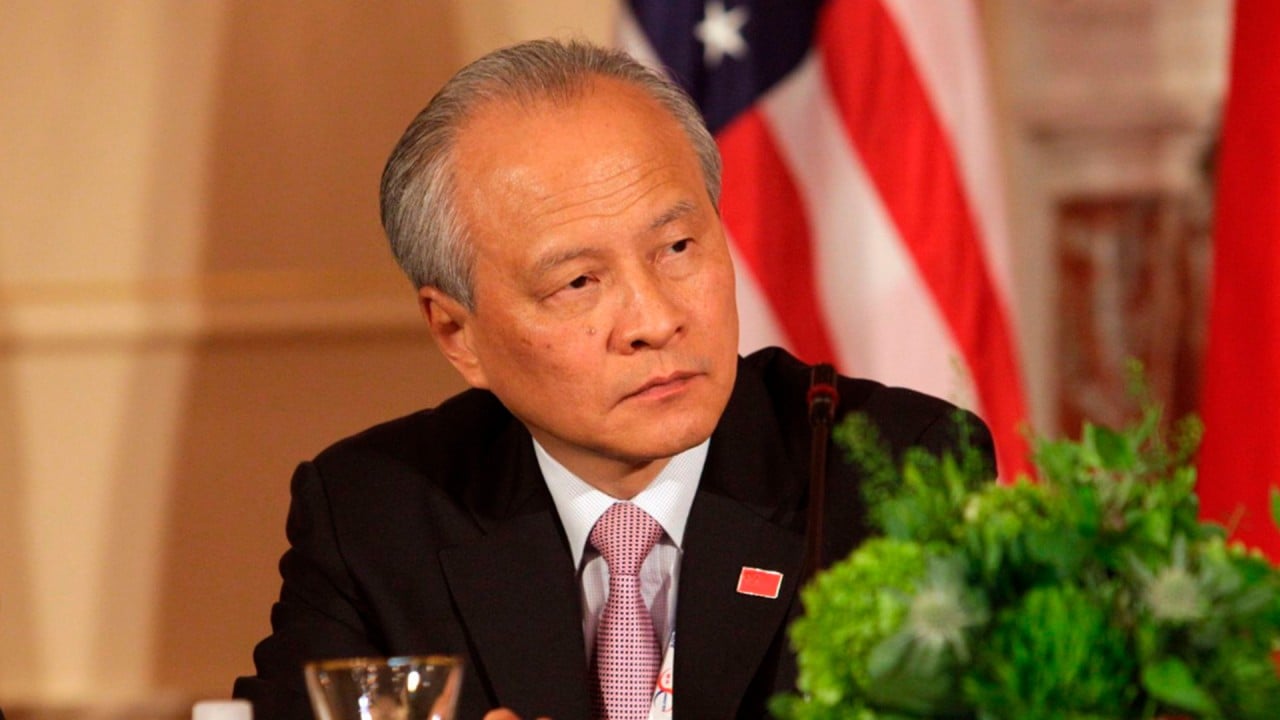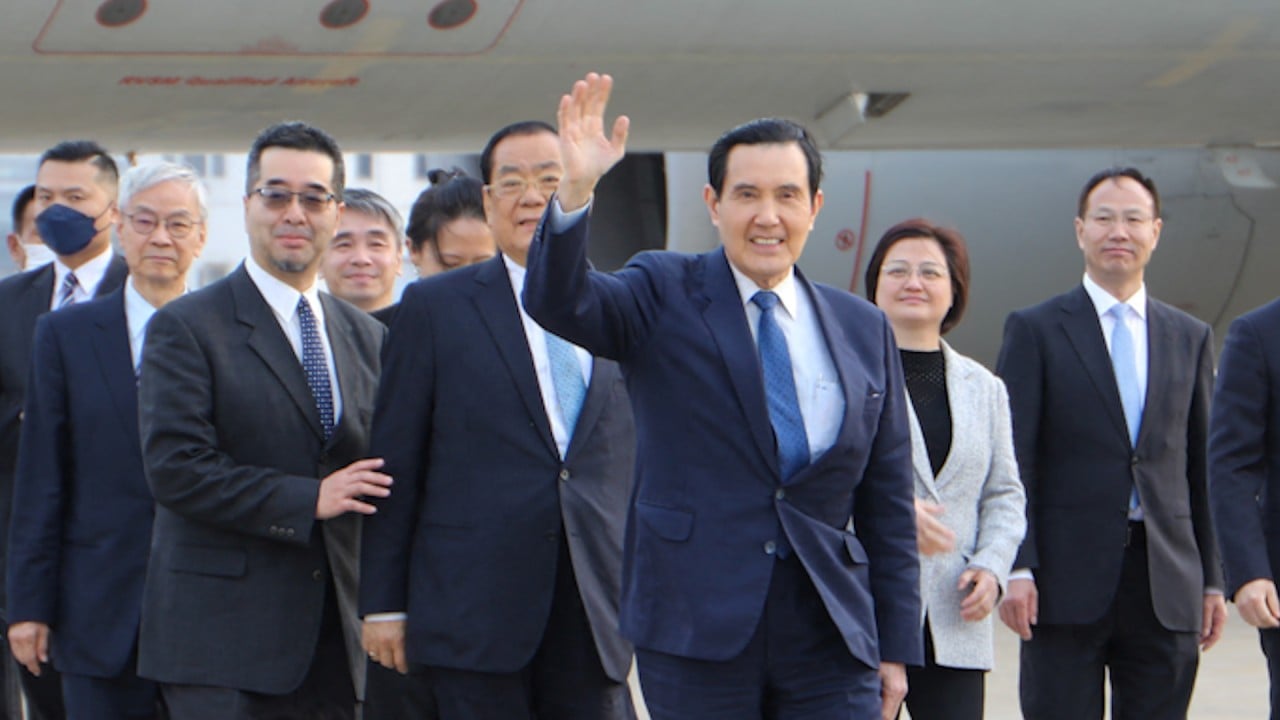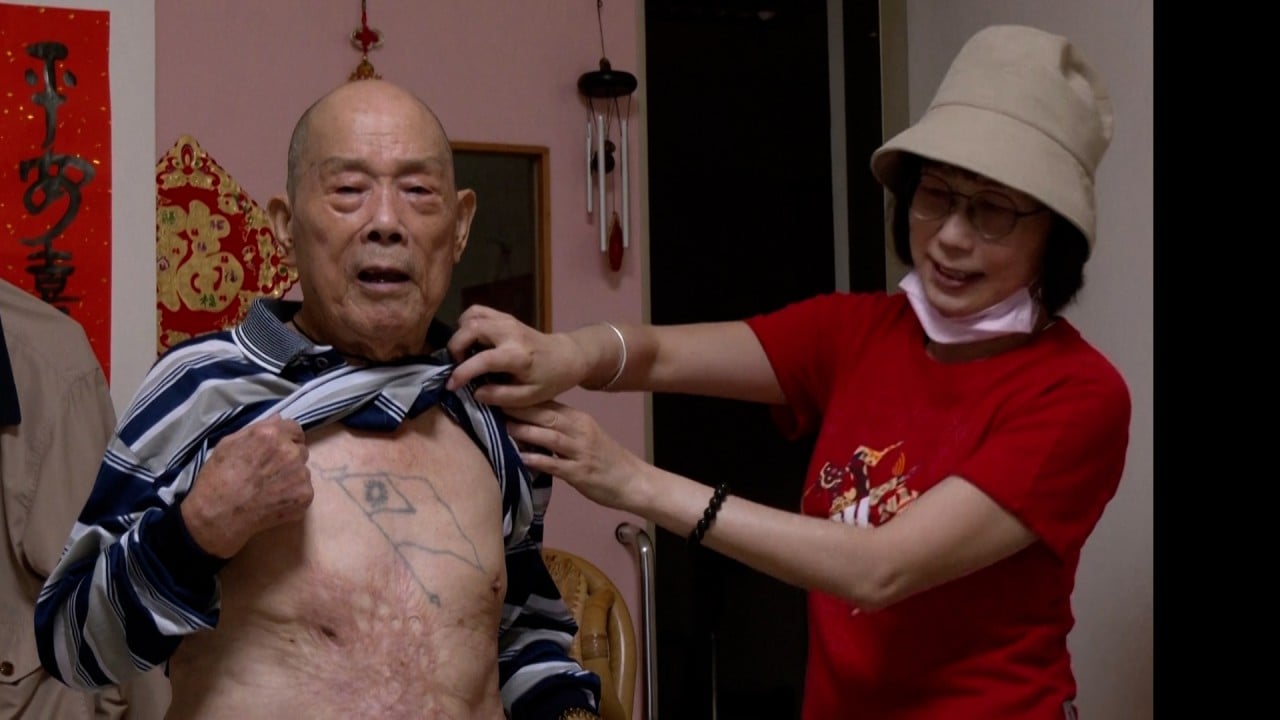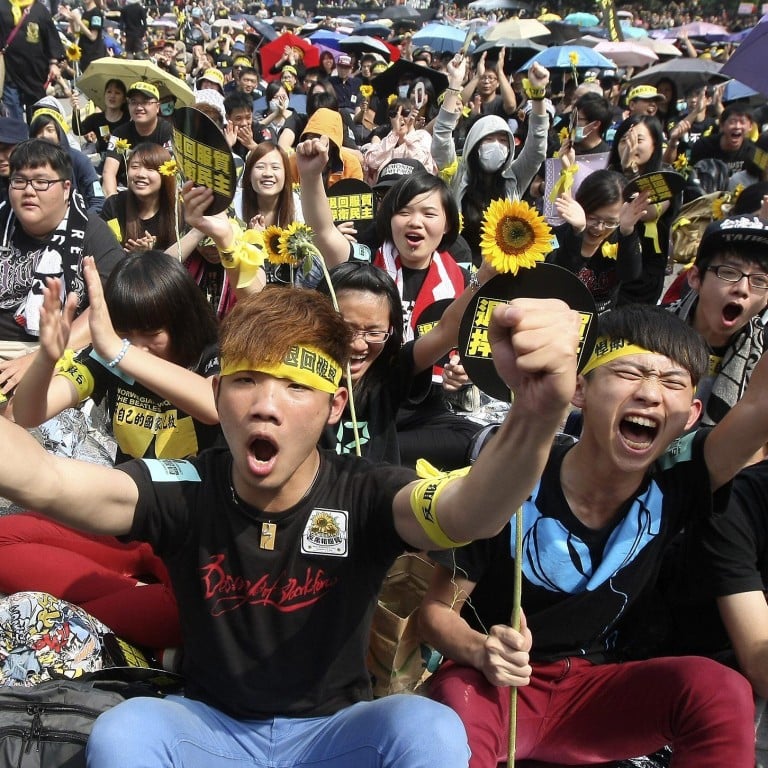
10 years on, Taiwan’s Sunflower Movement has wilted but its legacy lingers on
- Independence-leaning DPP and parties that rose out of the 2014 protests are losing popularity, but youth increasingly drives the island’s politics
- A decade after the student-led action protesting a trade deal with Beijing, the notion of closer cross-strait ties no longer deters young voters
An alliance of six young progressive politicians – all part of the 2014 movement – calling themselves “The Generation” stood in the race for seats in the Legislative Yuan. Only two won in their districts.
Many young voters turned instead to the Taiwan People’s Party (TPP), led by unsuccessful presidential candidate Ko Wen-je – whose own political career was aided by the movement.
This was despite a shift in Ko’s political leanings, from the “pan-green” that denotes independence-leaning parties, towards the more Beijing-friendly stance of the “pan-blue” Kuomintang (KMT) by the time of his presidential run.
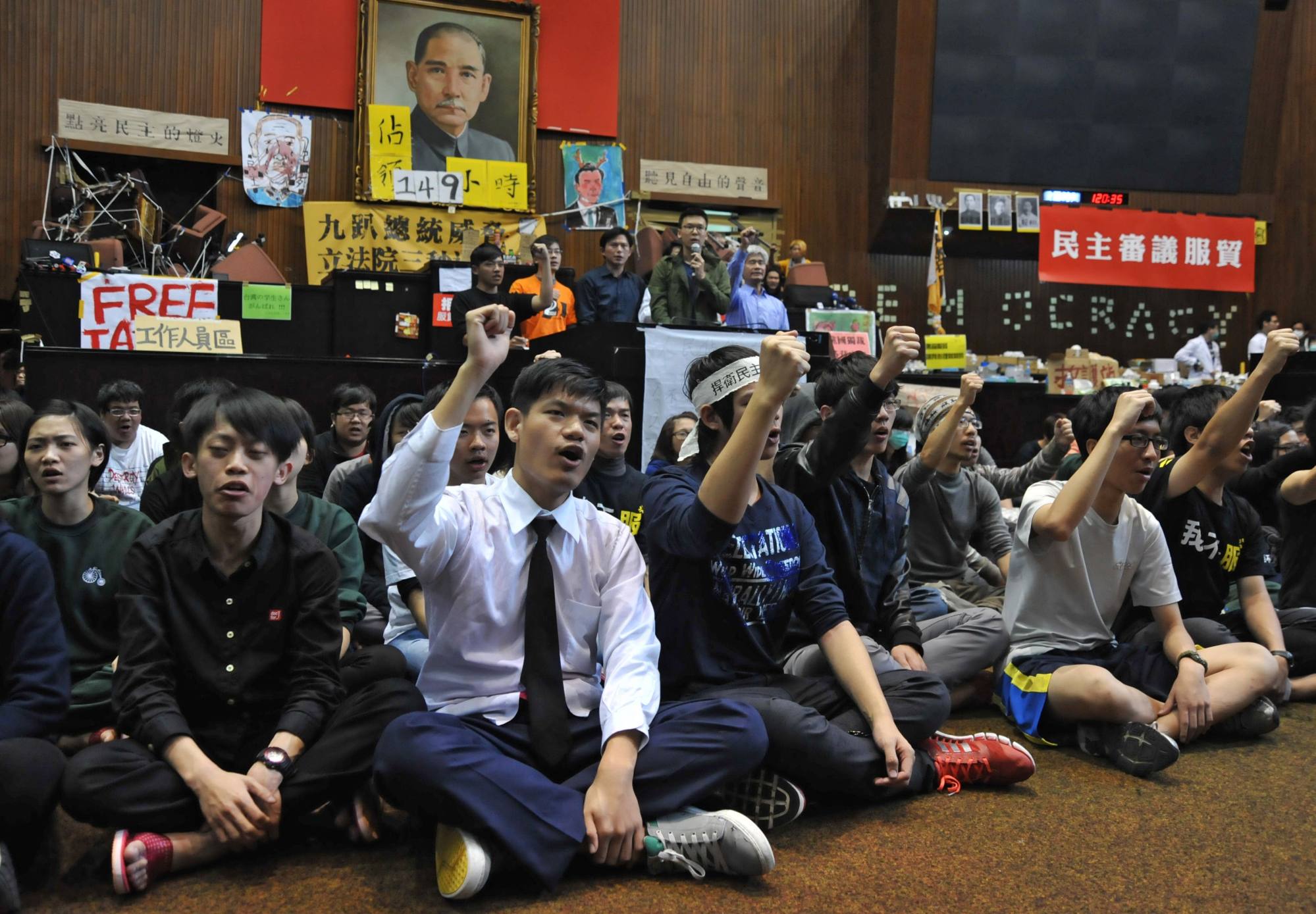
Ko’s party won a historic eight seats, replacing the pro-independence New Power Party (NPP) – formed in the wake of the Sunflower Movement – as the third most-represented party in the legislature.
The ruling Democratic People’s Party (DPP) – the main beneficiary of the Sunflower Movement – retained the presidency but lost its legislative majority in January.
The main opposition KMT – which favours closer ties with the mainland – also fell short of a majority in the 113-seat legislature but added 14 seats to bring its total to 52.
Despite falling support for the political parties that sprang from the movement, many believe that it is far from irrelevant and has left a profound legacy on Taiwanese youth politics.
“It changed the whole narrative for Taiwanese people,” Lin Fei-fan, a student leader during the Sunflower Movement, said earlier this month.
“How we viewed cross-strait relations in the past during the KMT’s period [in power] was that only the government could have a say in our relations with China. Civil society had a role to influence policies. Not just the policy, but also our own fate.”
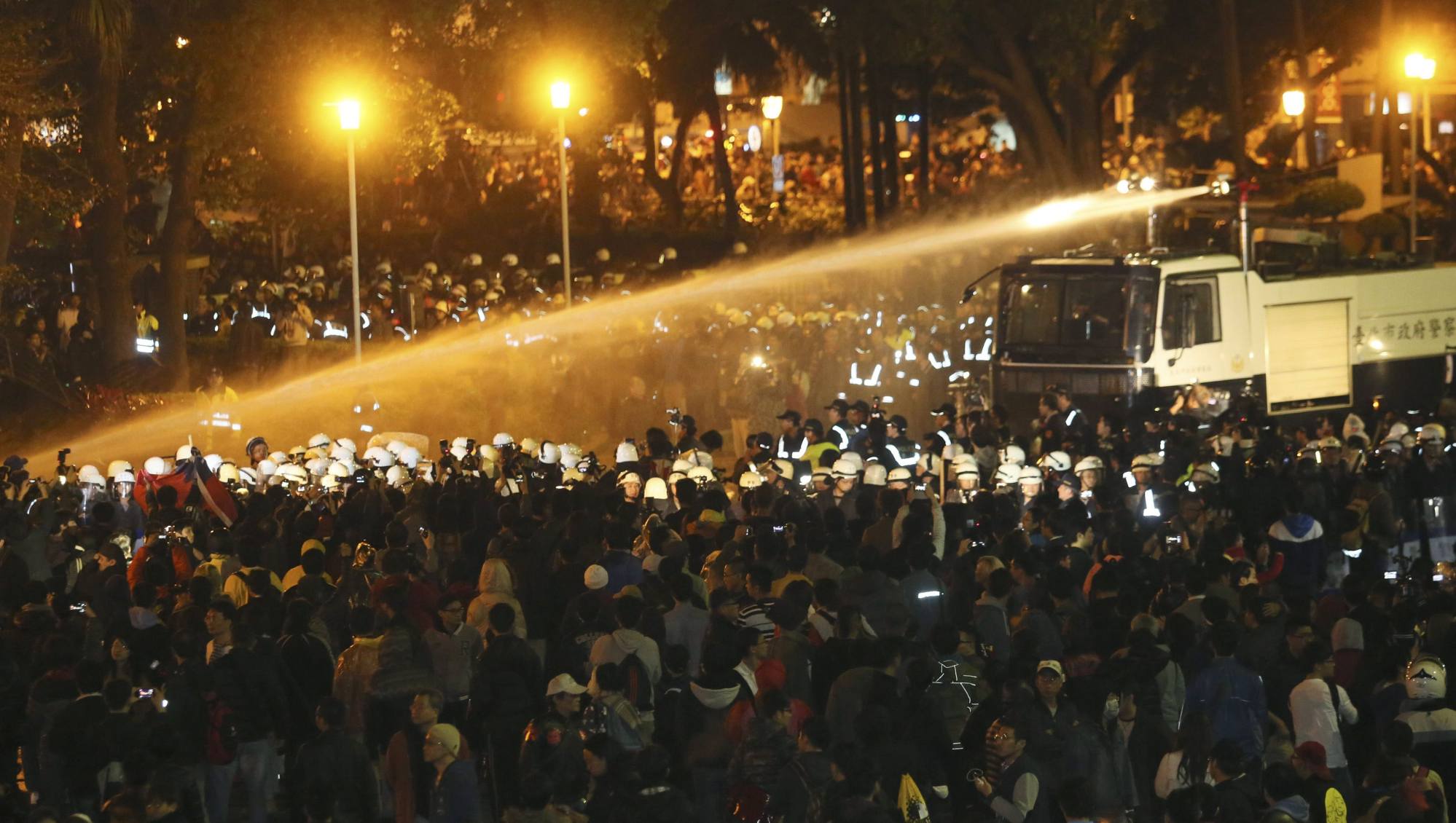
Supporters of better relations between Taipei and Beijing blame the movement for scuppering the Cross-Strait Service Trade Agreement (CSSTA), one of many policies that would have advanced cooperation under then president Ma Ying-jeou from the KMT.
Relations with Beijing have worsened under the DPP, with Chinese President Xi Jinping warning his US counterpart Joe Biden last year that Taiwan was “the most sensitive issue” in China-US relations.
Beijing regards the island as part of its territory, to be brought under its control by force if necessary. Washington does not recognise Taiwan but opposes any unilateral change to the status quo. The US is also Taiwan’s largest arms supplier.
The CSSTA was hailed by Beijing as beneficial to both sides, and especially to small and medium-sized businesses in Taiwan, but attracted controversy from the Taiwanese public, wary of an agreement negotiated behind closed doors.
The pact was a follow-up measure to the Economic Cooperation Framework Agreement (ECFA), which laid the groundwork for further cross-strait agreements and aimed to reduce trade barriers on both sides of the Taiwan Strait.
The CSSTA promised to open up the Taiwanese service industry – the island’s largest sector comprising 70 per cent of its GDP – to investment from the mainland, a move that supporters said would invigorate the local economy.
However, critics believed the agreement would lead to job losses and advance Beijing’s goal of unification via economic integration, as well as compromise Taipei’s political autonomy.
“If that agreement had been ratified, Taiwan would be rapidly absorbed into China’s central economy and with that, Taiwan’s political autonomy would be compromised,” said Ho Ming-sho, a professor of sociology at National Taiwan University.
Beijing outlines ‘interconnected living’ plan for Taiwan and Fujian
On March 17, 2014 – from his hiding place in a parliamentary bathroom – KMT legislator Chang Ching-chung declared through a megaphone that the legislature had passed the CCSTA in just 30 seconds, bypassing line-by-line legislative reviews.
The next day, students occupied the Legislative Yuan. Thousands came from across Taiwan to support the occupiers, forming an encampment that included food sellers, makeshift classrooms and medical care.
On March 30, an estimated 500,000 people gathered outside the presidential office in Taipei for one of the largest protests in Taiwan’s history. The Ma administration eventually agreed to suspend the CSSTA, and the protesters withdrew on April 11.
The trade pact “was just the trigger point” for fears and frustrations that had been building for years, according to Brian Hioe, who co-founded independent magazine New Bloom after taking part in the movement.
The Ma administration had already seen protests against its nuclear policy and the hosting of officials from the mainland, as well as alleged interference in Taiwanese media from across the Taiwan Strait.
“We look back and see [the movement] as very hopeful. But it was all motivated by a sense of desperation. I think people have really forgotten the sense of desperation that existed because of this fear of the trade bill and the KMT’s actions,” Hioe said.
The blocking of the CSSTA paved the way for an end to the Ma era of deepening ties with the mainland and the independence-leaning DPP’s political victories in 2016, its first majority in the legislature and Tsai Ing-wen’s two-term presidency.
Beijing suspended communications with the DPP government and issued numerous economic sanctions, including the suspension of some tariff reductions in the ECFA.
Taiwan’s Tsai Ing-wen leaves tough legacy for president-elect William Lai
For Alfred Lin, a 33-year-old KMT member who ran for a Legislative Yuan seat in Taichung this year, the Ma administration was a “golden age for students and tourists safely conducting exchanges with each other”.
“We already lost that window, we lost that chance. And now we just see cross-strait relations deteriorate and become worse and worse.”
According to the Taipei-based think tank Chung-Hua Institution for Economic Research, the CSSTA would have created 12,000 jobs in Taiwan, mostly in the wholesale and storage sectors, and brought an extra NT$12 billion (US$376 million) to the economy.
But others argued that opening to mainland investment would cost jobs. Taiwan’s economy ministry estimated at the time that the CSSTA would increase annual GDP by 0.025–0.034 per cent.
As mainland China seeks more Taiwanese money, why aren’t more listening?
Taiwan’s exports to the mainland and Hong Kong markets, which accounted for 40 per cent of the total in 2014, reached just 35.2 per cent last year. Taiwanese investment in the mainland has also dropped significantly in the past decade, from about half of the island’s outbound investments to 11.4 per cent in 2023.
Sceptics of Beijing regard the movement as the beginning of a new chapter, when international trading partners began to “de-risk” their relations with the mainland.
For Ho, from National Taiwan University, the Sunflower Movement marked “a path forward for new thinking that globalisation, in terms of using trade … in the hope that peace will [be] a consequence. That kind of illusion everyone knows now is naïve.”
Politicians became younger as a result of the Sunflower Movement. Its activists went on to serve as village chiefs and city councillors as well as legislators. Some joined the DPP or the new “third force” parties like the NPP – once the most successful of the movement parties.
Chinese deputies want young Taiwanese to take part in mainland politics
After winning five legislative seats in the 2016 election and three in 2020, the NPP fractured over ideological disagreements, with many members later joining the DPP or going independent.
Notably, legal scholar and Sunflower Movement leader Huang Kuo-chang last year announced that he was leaving the NPP for Ko’s TPP, prompting condemnation from his former fellow activists.
Ko, who supported the movement in 2014, won support from the DPP for his mayoral campaign in 2014 when he ran as a pan-green, non-party outsider. He established the TPP in 2019.
During the January election campaign, Ko raised the possibility of revisiting the CSSTA, claiming students had only been protesting the “black box” of the trade pact, rather than its contents.
Despite the landslide youth-led opposition to the CSSTA 10 years ago, Ko’s remarks did not lead to a major setback among his mainly educated young supporters.
He was not alone in suggesting a restart of ratification discussions. The KMT’s presidential candidate, Hou Yu-ih, also argued that revisiting the pact could help Taiwan better diversify its economic interests.
According to New Bloom’s Hioe, it was Ko’s political style, rather than his politics, that led to his party’s success this year. “The ‘Ko model’ was the template for, in many ways, the NPP as well … everyday people running for office, we’re different, we’re not polished,” he said.
Insiders said this year’s defeats for many Sunflower Movement politicians were the combined result of fractures in their parties and difficult races in deep-blue districts, with voters already fatigued with two terms of DPP government.
Can disaffected youth deliver for Taiwan’s third-placed presidential candidate?
The pan-green politicians also took note of the TPP’s success, particularly its strength in reaching young people via social media platforms like TikTok, where the DPP has no presence due to national security concerns.
Miao Po-ya, who helped establish the Social Democratic Party in 2015 after taking part in the movement, was elected to the Taipei city council in 2018 and re-elected in 2022. She ran for the Legislative Yuan this year with the backing of the DPP, but lost.
“I think one of the failures is political … We did not gather the people who joined the Sunflower Movement as a political force successfully. We failed in that way. I think people have split to the DPP and Ko Wen-je in these 10 years,” she said.
But the ideology of the movement had not failed, Miao added, pointing to the fact that all parties have become younger and their campaigns are focusing more on youth issues as proof.
“In this presidential election, all three candidates said they cared about Taiwan’s national defence, they cared about Taiwan’s sovereignty and Taiwan’s safety, and that is one of the most important ideologies of the Sunflower Movement.”


